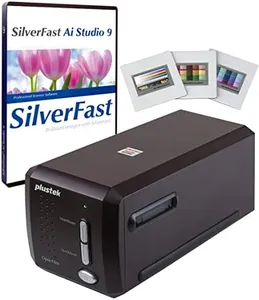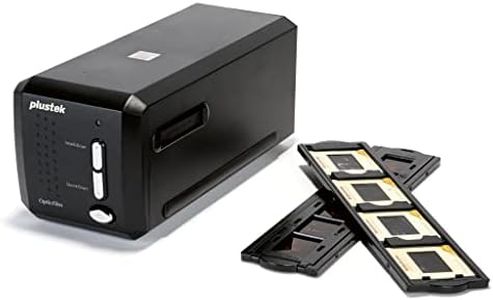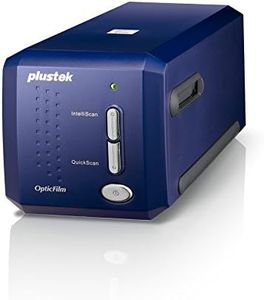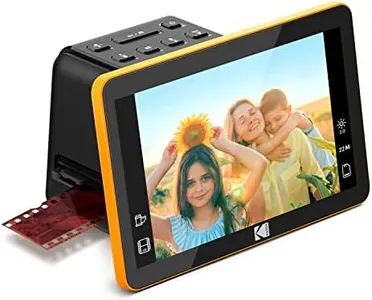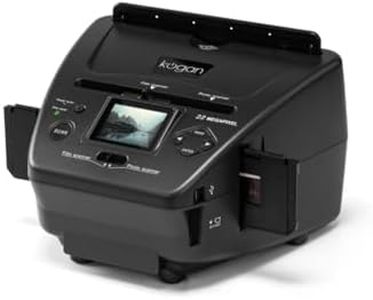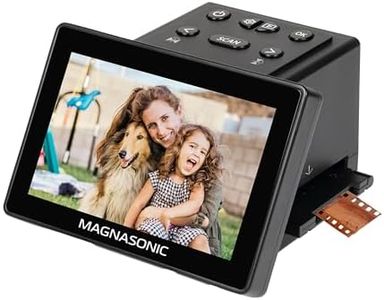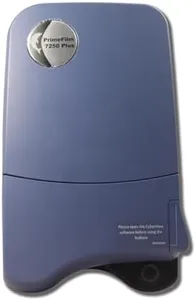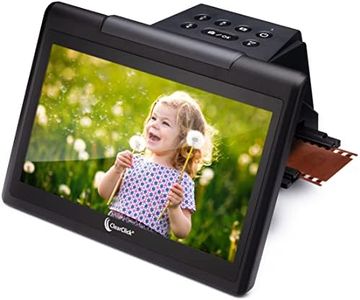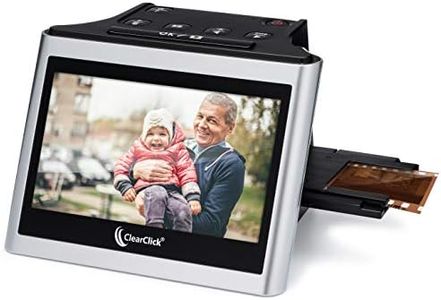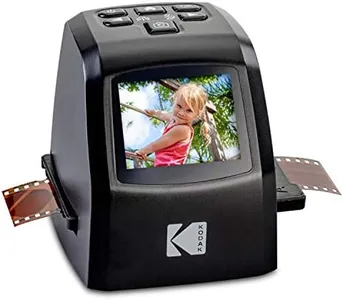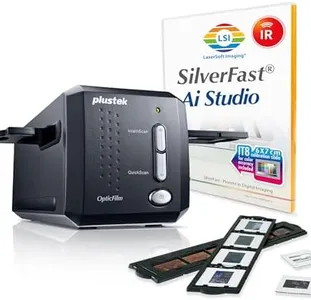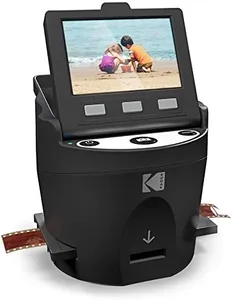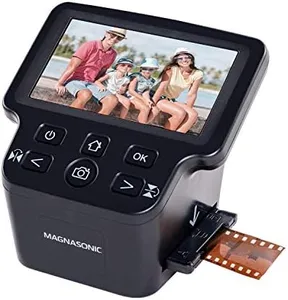We Use CookiesWe use cookies to enhance the security, performance,
functionality and for analytical and promotional activities. By continuing to browse this site you
are agreeing to our privacy policy
10 Best Digital Negative Scanners
From leading brands and best sellers available on the web.Buying Guide for the Best Digital Negative Scanners
Choosing a digital negative scanner is all about making sure you can easily and efficiently turn your film negatives or slides into high-quality digital files. Start by thinking about the kinds of negatives you have, how often you plan to scan, and what you want to do with the digitized images—whether that's archiving precious memories, editing them digitally, or printing new copies. It's important to pay attention to key features that influence how your final scans will look and how easy the scanning process will be.Resolution (DPI)Resolution, measured in dots per inch (DPI), defines how much detail the scanner can capture from your negatives. Essentially, a higher DPI value means sharper and more detailed digital images. If you only need scans for sharing online or viewing on computer screens, lower DPI (around 1200-2400) is typically enough. For photo printing or enlargements, or if your film contains very fine details, you’ll want a scanner capable of handling higher resolutions—think 3200 DPI and above. Consider what you’ll use the digitized files for: everyday viewing needs less DPI than professional editing or printing.
Supported Film FormatsScanners are not universal; some can handle only 35mm negatives, while others work with medium format or even larger film types. This spec tells you which types and sizes of negatives, slides, or transparencies the scanner can accept. If you mainly have 35mm film, a basic scanner will do, but if you work with a variety of formats (such as 120/220 medium format film, or old slides), look for a model that supports them all. Matching your scanner to your film collection ensures you won’t be left with unscannable memories.
Scan SpeedScan speed indicates how long it takes for the machine to digitize each frame or strip of film. Faster scan speeds mean less time waiting, which is important if you have many negatives to process. For occasional users, slow speeds may not be a big issue, but if you’re digitizing an entire archive, speed becomes a significant convenience. Decide based on how much film you have to scan at once and how patient you are with the process.
Color DepthColor depth, often measured in bits (like 24-bit or 48-bit), determines how many colors your scanner can capture. Higher color depth means richer, more accurate color reproduction, which is particularly important for old or artistically valuable negatives. If color accuracy matters to you, or if you intend to edit the scans, choose a scanner with greater color depth. For basic family snapshots, lower color depth usually suffices.
Software and ConnectivityThe software included with your scanner determines how easy and flexible the scanning process is, such as adjusting color correction, removing dust spots, or saving in different file types. Some scanners are very straightforward, offering only automatic scanning, while others let you tweak every setting. Connectivity refers to how the scanner connects to your computer—older models may use USB 2.0, newer ones may offer faster connections or even Wi-Fi. Choose a scanner whose software you find user-friendly and which easily connects to your devices.
Dust and Scratch RemovalMany film scanners have built-in technology to automatically detect and minimize dust and scratches during scanning. This helps reduce manual photo editing later and ensures cleaner scans, especially with old or stored negatives. If your negatives are well-preserved, this might not be necessary, but if you’re dealing with lots of aged or dusty film, this feature can save you a lot of cleanup time.
